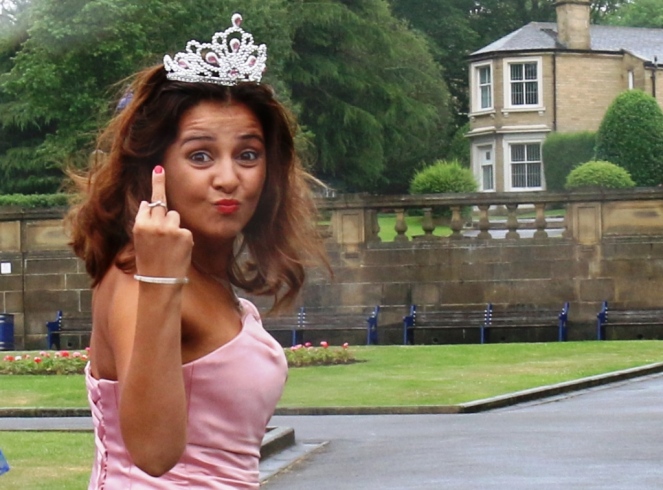 On a Young Conservatives blog I’m not sharing a link to, someone proudly (arrogantly) responds to ‘liberal minds’ who complain about lack of ethnic diversity among fairy-tale princesses. His argument is that the predominance of porcelain skinned princesses is simply ‘realistic’, because the original stories are set in white-majority countries. I find it curious that, in fantasy worlds where pumpkins turn into carriages and frogs into princes, he’s such a stickler for verisimilitude when it comes to skin colour.
On a Young Conservatives blog I’m not sharing a link to, someone proudly (arrogantly) responds to ‘liberal minds’ who complain about lack of ethnic diversity among fairy-tale princesses. His argument is that the predominance of porcelain skinned princesses is simply ‘realistic’, because the original stories are set in white-majority countries. I find it curious that, in fantasy worlds where pumpkins turn into carriages and frogs into princes, he’s such a stickler for verisimilitude when it comes to skin colour.
This liberal mind believes representation is really important, even in cartoons and fairy-tale worlds. Seeing yourself (and others) represented in books, on the screen and in the toys you play with is a serious issue. Even the Tellytubbies represented. I know Disney have made more of an effort to include black and brown characters in recent years, but is it good enough when many of the stories still perpetuate knackered old stereotypes? I recently watched Kenneth Branagh’s 2015 live action version of Cinderella, where the first woman of colour we see is a kitchen maid, FFS. But then this is a world where Prince Charming is still entitled to any woman he wants…
One of the Princesses in my project, Natalie Davies, is an actor from Bradford, and her heritage is mixed. She had this to say:
“The princesses do not reflect the everyday female. I never could quite relate to any of the Disney princesses – so I just settled for being Mowgli!”
And playwright/poet Zodwa Nyoni delivers African Princess realness in another of my portraits:
“There is a westernised stereotype of what princesses look like, usually blonde-haired and blue-eyed. Certainly with fair hair and skin. I come from a culture with royalty that doesn’t look like that, but is never held up, celebrated and respected as royalty.”
Well Zodwa’s Princess certainly garnered respect from a passer-by during our photoshoot, as he yelled his enthusiastic support from the street.

There’s a great blog by a Dad called ‘Man vs. Pink’, chronicling the struggle he and his daughter share against pinkification. In ‘Celebrating Disney Princesses of Colour’ he says:
“As parents of a mixed race daughter, it’s important we include representations of girls & women of colour in stories, films, and merchandise she is exposed to. As far as Disney Princesses are concerned, the women of colour tend to be far less prominent than their caucasian counterparts… While I appreciate there are overriding issues with gender representation and Disney Princesses (admittedly only three of these movies – just about – pass the Bechdel Test), that is something that I can address by talking to my daughter about these stories.”
It’s great when parents can take the negatives and use them to stimulate conversation with their children, but some would also like to buy an Esmeralda lunchbox from the Disney store.
